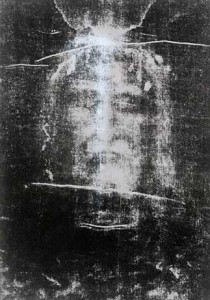 The Scottish philosopher David Hume famously disbelieved in miracles. He used a kind of Occam’s Razor to cut through any suggestion of a miracle. He argued:
The Scottish philosopher David Hume famously disbelieved in miracles. He used a kind of Occam’s Razor to cut through any suggestion of a miracle. He argued:
By definition, a miracle goes against our very regular and extensive experience of how the world works. Therefore, on the basis of experience, the probability that a miracle has occurred must always be less than the probability that it hasn’t. Because it is rational to believe what is most probable, we never have a good reason to believe that a miracle has occurred.
So– “The alternative to the miraculous answer is always to be preferred because it will always be more probable.”
In other words, “Miracles are impossible therefore miracles don’t happen.”
As more and more scientific research is completed on the Shroud of Turin, however, Hume’s argument becomes more and more strained.
The toss up is this: The Shroud of Turin is either the burial cloth of Jesus Christ on which is recorded evidence of the resurrection OR it is a forgery OR it is just a mysterious artifact for which we do not yet have a natural explanation.
The most stunning evidence from the shroud is the mysterious image itself. The image was not painted. It was not burnt on with conventional heat application processes. According to the latest research by Dr Paolo Lazzaro, the best explanation for the image is that it was seared onto the linen by a super intense blast of ultra violet light. Not only was this impossible in the Middle Ages, but it is impossible today. We don’t have the technology to reproduce this kind of image.
Therefore we need to ask, which is more difficult to believe–that the Shroud is the burial cloth of Jesus or that some medieval forger was able to blast ultraviolet light on the shroud to produce the image in a manner still undetermined–using a technology that is still way beyond that available today?
It is actually easier to believe that the Shroud is authentic.
The only other option (and one which an increasing number of Shroud skeptics take) is to shrug and say, “Well, it is a mysterious artifact that we cannot explain.”
But when you add that the image not only shows a crucified man, but a crucified man with the particular distinguishing marks of Jesus Christ’ crucifixion (the crown of thorns, the unbroken legs, the spear wound in the side, the flogging) it becomes increasingly difficult to maintain such disinterested agnosticism.
I suppose the authenticity of the Shroud will never be proven in a completely watertight way, but with the accumulation of evidence it is increasingly difficult to deny.
If, according to Hume, we must choose the most probable answer we would choose the proposal that it is the burial cloth of Christ and the image is supernatural evidence of his resurrection.
In other words, in this one case, the miraculous answer is the most probable.





